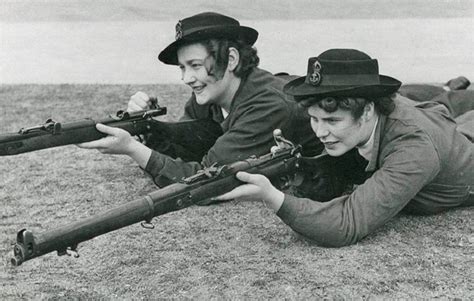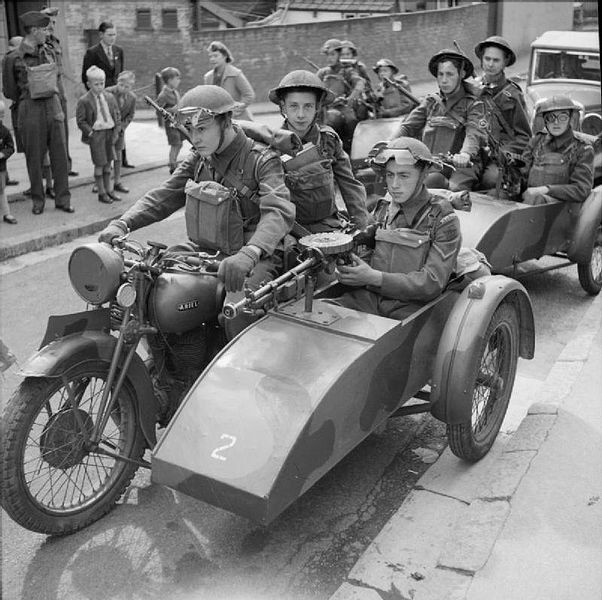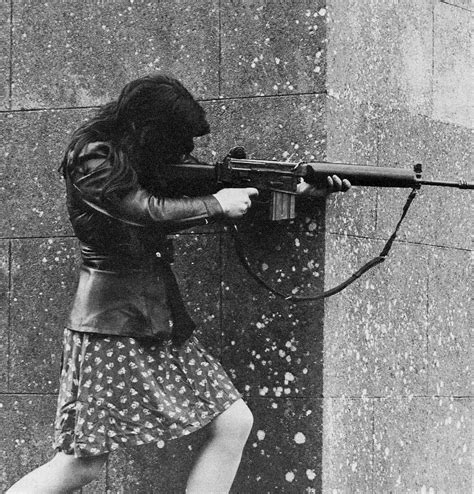There is lots of handwringing about how our military is failing, is undersized, is not fit for purpose. A neoliberal fringe is debating should we join NATO for defense.
The government is beefing up military expenditure. This, however, if foolish. Say we get 50 tanks and purchase fighter jets, that's useless against an invader with 400 tanks and 50 fighter jets; we have only wasted money and blood. You don't go toe-to-toe with a larger force: that's the lesson of 1916. ("Armed neutrality, to the extent that it would seriously deter any potential aggressor, is likely beyond our capacity." says a letter in Monday's paper)
A modest proposal
- A people's militia on the model of the Committees for the Defense of the Revolution which is organised into small local nuclei with maybe a dozen to a hundred members in each.
- Each nucleus to be an autonomous flying column equipped with at least assault rifles and pistols. Where resources allow, there could also be some specialists: snipers, specialists in explosives, mortars, rocket launchers and probably a guitar. They would keep their weapons at home or in small local arsenals.
- This should include 5-20% of the population. 33-46% of most populations are fit to be in the militia, in the sense that they're not excluded by age or disability.

Training
These people would get training in use of weapons, and in guerrilla tactics.
Look at the Indian Territorial Army – https://en.wikipedia.org/wiki/Territorial_Army_(India) – they train on weekends and holidays, putting in 30-60 four-hour days a year, plus one intensive camp a year for 4-14 days.
That is about 200-300 hours a year. For the first three years, they would also have to do about 100 hours socially-useful labour, discussed below.
Gross costs
Arming 20% of our population – a million men and women – with a primary weapon, plus a service pistol (plus perhaps a machete or tomahawk, and possibly some vehicles) is a gross cost (but not a net cost, as we shall see).
For primary weapons, an AK-47 or M-16 cost €700 retail, but can be got for €300. If we train gunsmiths, we can churn out AKs under €100
Service pistols like a Beretta 9M or a SIG Sauer P320 costs something similar. I believe a Glock 19 is the best choice for manufacturability. (The Glock 17 isn't as good a choice for a mixed-gender force.) These probably be got for under €250.
Other weapons would include sniper rifles, mortars, rocket launchers, not for every member, but for one specialist in each flying column. Probably drones now too.
The Worker-Peasant Red Guards in DPRK have sidecar motorcycles, which I feel we should adopt for æsthetics, I mean look how cool this looks:

Arming 20% of Ireland's population with these would cost something like €1.5 billion. For comparison, Ireland's military budget is €1.23 billion FOR ONE YEAR in 2023, set to increase to €1.6 billion. And an AK has a service life of 20-40 years, so it's really nothing.
Paying for it
Marx wrote in his work on the Paris Commune: "The Commune made that catchword of bourgeois revolutions – cheap government – a reality by destroying the two greatest sources of expenditure: the standing army and state functionarism" and "in the rural districts the standing army was to be replaced by a national militia".
More relevant is his Demands of the Communist Party of Germany: "Universal arming of the people. In future armies shall at the same time be workers’ armies so that the armed forces will not only consume, as in the past, but produce even more than it costs to maintain them."

The gross cost per cadre might be €1500-2000 worth of equipment. The benefit: they're now organised as a labour force. An hour of labour in this country is worth at least €10, so 200 hours a volunteer-labour recoups the upfront expense.
Cuba's militia does things like blood-donation drives. For the first three years in the service, cadres would do say 100 hours a year socially-useful labour (such as blood-drives, singing rebel ballads at hospices, bottle-feeding runty piglets), and 40 hours per year in subsequent years. The militia is therefore a net benefit to the exchequer.
Simple but worth mentioning: members could also pay fees to cover part of the cost. Maybe, not definitely.
The advantages of decentRAlised defense
- It is a perfect defense against occupation. An invader would be bloodied by flying columns everywhere he goes — ¡En cada barrio, Revolución! — and they'd be armed, trained. An invader would have no centralised targets to strike, no military base or barracks.

-
This is more commonsensical than you think. If we ever are invaded again, we are just gonna have to train up our people to do this anyway, so really all I'm saying is that we should preëmptively do the thing that's gonna make an occupation fail, and has before, i.e. ensure a capable guerrilla force.
-
It's a question of military doctrine. We can't fight a conventional centralised war against a Great Power, and trying would just get us squashed (like 1916). Instead, we should adopt a military doctrine of decentralisation. This is a military term that comes from the words decent + RA, because we would have a decent 'RA to defend Mother Ireland.
-
It's our habit. As you know, Ireland pioneered modern guerrilla warfare. The Irish told Edward Bruce, "It is our custom to pursue and fight, and fight when retreating, and not stand in open hand-to-hand conflict until the other side is defeated." Asymmetric warfare is the only thing that has ever worked in the history of Ireland. Simon Coveney's symmetric military doctrine is dumb.
-
"[In 1778] the people began arming themselves and publicly organising Volunteer corps throughout the country. In a short time Ireland possessed an army of some 80,000 citizen soldiers, equipped with all the appurtenances of war; drilled, organised, and in every way equal to any force at the command of a regular Government. All the expenses of the embodiment of this Volunteer army were paid by subscriptions of private individuals. As soon as the first alarm of foreign invasion had passed, the Volunteers turned their attention to home affairs and began formulating certain demands for reform—demands which the Government was not strong enough to resist. Eventually, after a few years' agitation on the Volunteer side, met by intrigue on the part of the Government, the ‘patriot’ party, led by Grattan and Flood, and supported by the moral pressure of a Volunteer review outside the walls of the Parliament House, succeeded in obtaining from the legislature a temporary abandonment of the claim set up by the English Parliament to force laws upon the assembly at College Green. This and the concession of Free Trade (enabling Irish merchants to trade on equal terms with their English rivals) inaugurated what is known in Irish History as Grattan's Parliament."
-
Spread useful skill like first aid, mechanical skills, fitness, and the language (the Irish military gives orders in Irish in case you didn't know that).
-
As a side-benefit: people training together would make improve their social lives, some would fall in love and get married. I mean, look, you really ought to be outside playing with your friends in the first place.
-
Lastly, because this militia – once armed and organised – will inevitably overthrow the bourgeoisie and establish the dictatorship of the proletariat.